Buddha is my punk
30 05 2017Comments : Leave a Comment »
Tags: asian cities (other), burma, cultural mix n match, myanmar, yangon
Categories : Uncategorized
A night on Le Than Thon
21 05 2017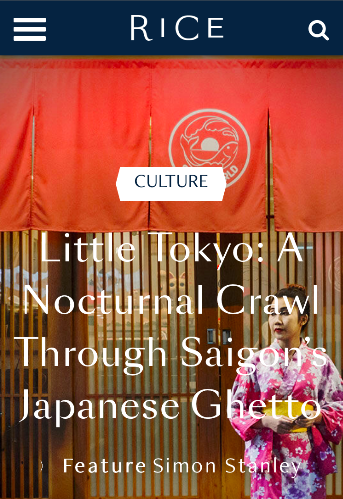
An article titled A nocturnal crawl through Saigon’s Japanese ghetto on the fun district of Le Thanh Ton, previously reported on the blog here.
Comments : Leave a Comment »
Tags: asian cities (other), ho chi minh city, japanese, neighbourhoods, saigon, Vietnam
Categories : Uncategorized
Danang city nights
7 02 2017
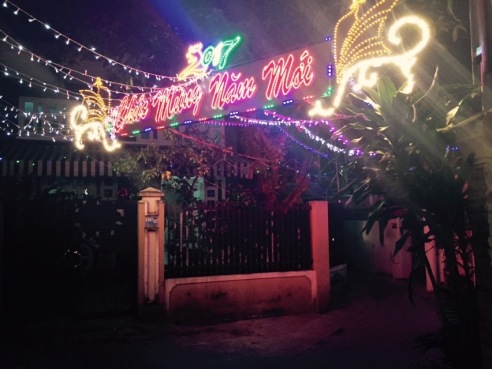
Across the dragon bridge lies the thumping main drag of Nguyen Van Linh, wreathed in neon and lined with blaring cafes and the slightly more sedate, but still buzzing, riverside drive of Bach Dang.
Lovers roam with selfie sticks, vendors sell corn and fishballs on sticks and loud music thumps. Like the other Indochinese people, the Lao and the Thais, the Vietnamese love noise and lights. Whole families promenade, taking pictures of each other, kids treated to helium balloons or plastic toys. The buzz of motorcycles is incessant, cafes are packed in the evening with little stools all facing the footpath and there are pop-up performances in the parks: Vietnamese opera, aerobics or in one case, a blonde woman in a halter-top showing an eager crowd how to dance the macarena.

Even in the beach suburbs, along quiet tree-lined streets, I found constellations of epileptic lights hanging between the branches – whether as new year decorations or all-year installations it was hard to say.
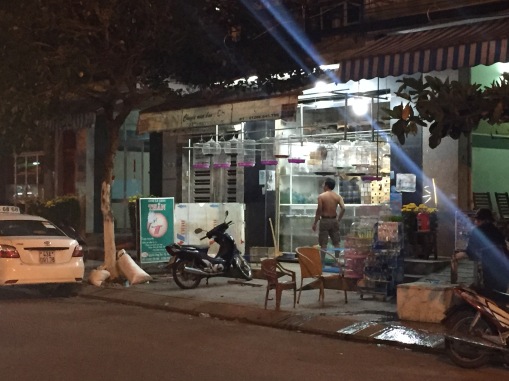
But my favourite night-time entertainment was voyeurism. Whether in the warren-like alleys South of Nguyen Van Linh or the tony streets of the beachside enclave, in the evening locals would open their doors to let in the cool air, and by extension, open their living rooms to the world. As you walk past you can see whole families crowded around flatscreen TVs, or lounging in pyjamas, in front rooms that open directly on to the street. Often, at the centre of the room is a family treasure – a motorbike, safely parked indoors in pride of place – or a flowering tree to celebrate the new year. The floors are usually tiled, walls often painted pale blue or green, and there is almost always a steeply ascending staircase at the back. More than anything else, it was these night-time strolls that gave me a sense of how Danang really lives.
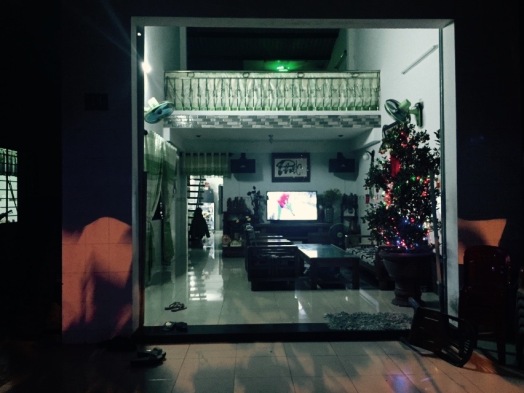
Comments : Leave a Comment »
Tags: asian cities (other), danang, Vietnam
Categories : Uncategorized
Champa
7 02 2017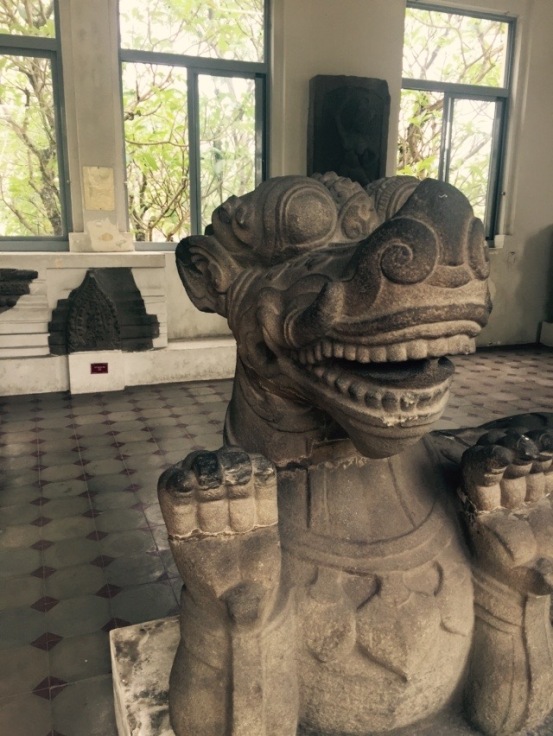
Housed in a hundred year old faded pink colonial building by the river is the city’s Cham museum, supposedly the world’s greatest collection of sculpture from the vanished Cham civilisation. This was centred around the now-ruined city of My Son an easy day trip from Danang. The Cham people still live across Indochina, now mostly Muslim, but their former civilisation worshipped Hindu and later Buddhist deities, and built great trading cities connected to port across Southeast Asia; their curvaceous sculptures were a clear influence on Majapahit Java and the Khmers.
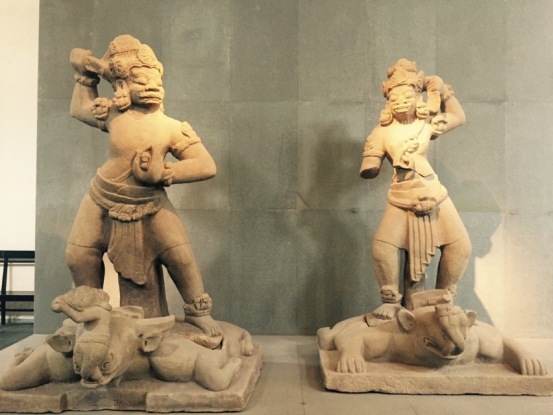
Comments : Leave a Comment »
Tags: art, asian cities (other), danang, Vietnam
Categories : Uncategorized
Banh xeo street
7 02 2017Eating cheaply and well is one of the highlights of any Vietnam trip and we feasted on roadside noodles served with pungent vegemite-y fish paste and sweet pink onions. These were delicious, but would leave me knocked out a few hours later with a blazing MSG hangover. We also saw oysters frying on the street, frog, and ate local specialities like the cao lao noodles in Hoi An, thick and springy with crunchy pork crackling in a fragrant broth, or bamboo soup.
In Danang our biggest discovery was the “Banh xeo” street, an alleyway really, home to rowdy, napkin-strewn restaurants serving the Vietnamese crepes stuffed with beans and shrimps, accompanied by satay sticks of beef.
Afterwards we would walk up to Highlands Coffee, one of the city’s innumerable high-decibel “ca phes” serving evening crowds sugar-loaded coffee drinks and weirdly, absolutely no food.
For dessert, the place to go was AVA, a tiny patisserie in a mouldy little room that served the absolute best chocolate cakes I have ever tasted.
Comments : Leave a Comment »
Tags: asian cities (other), cafes, danang, restaurants, Vietnam
Categories : Uncategorized
Bana Hills
7 02 2017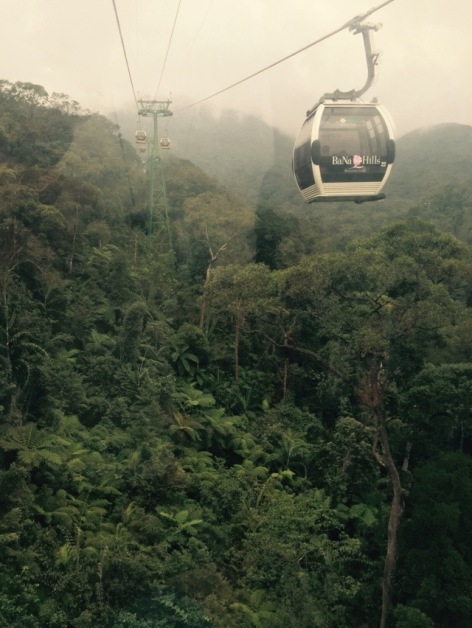
Less than an hour from the Danang Beaches lies the starkly different – and noticeably cooler – Bana Hills, a fantasy resort made up of a fake French village, located atop a mountain. The resort is reached via the world’s longest cable car which glides up over spectacular jungle scenes – rushing mountain streams, enormous ferns and towering Tarzan-like rainforest trees, before entering the clouds and mists near the mountain’s summit.
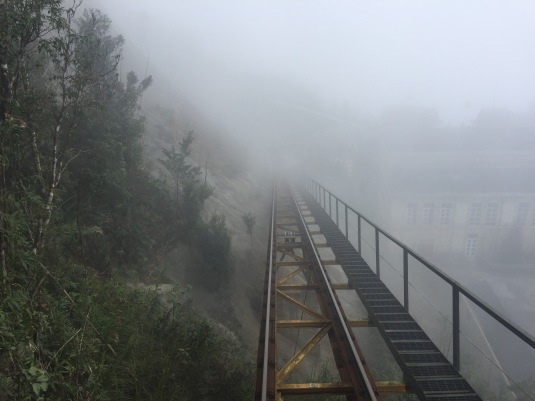

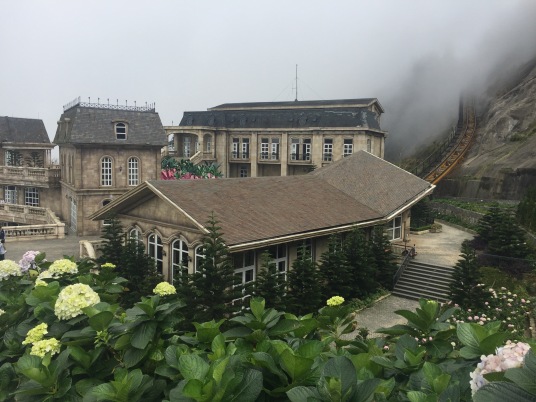
The “village” itself is mainly home to mediocre restaurants and shoving crowds of Vietnamese tourists, but the sheer scale and slickness of the operation came as a surprise to me (what else did Vietnam have up its sleeve?!), the beauty of the ride up is undeniable and the faux-Alpine village, wreathed in mist, is pleasingly surreal.
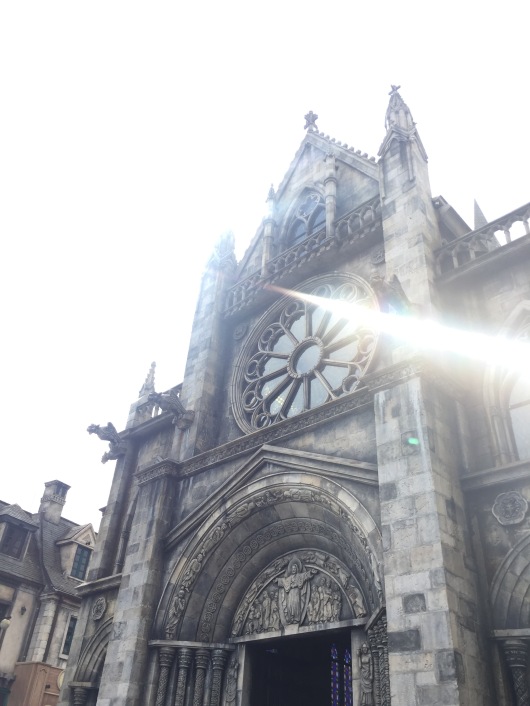
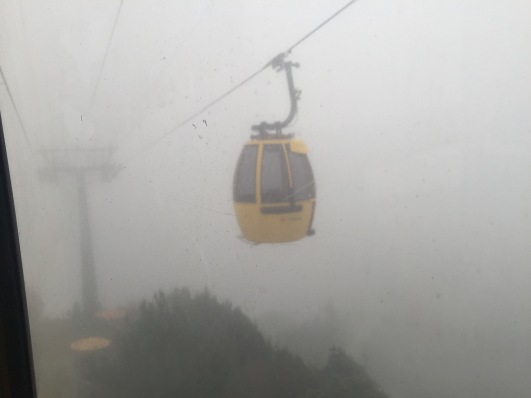
Comments : Leave a Comment »
Tags: architecture, asian cities (other), danang, strange places, Vietnam
Categories : Uncategorized
The Marble Mountains
7 02 2017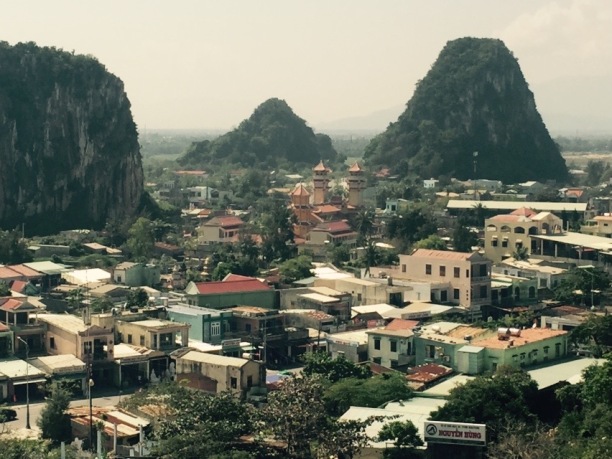
A fifteen minute drive South of Danang’s beaches the Marble Mountains rise up abruptly. The craggy outcrops are riddled with caves and subterranean shrines, where shafts of sunlight filter in through ceiling fissures.
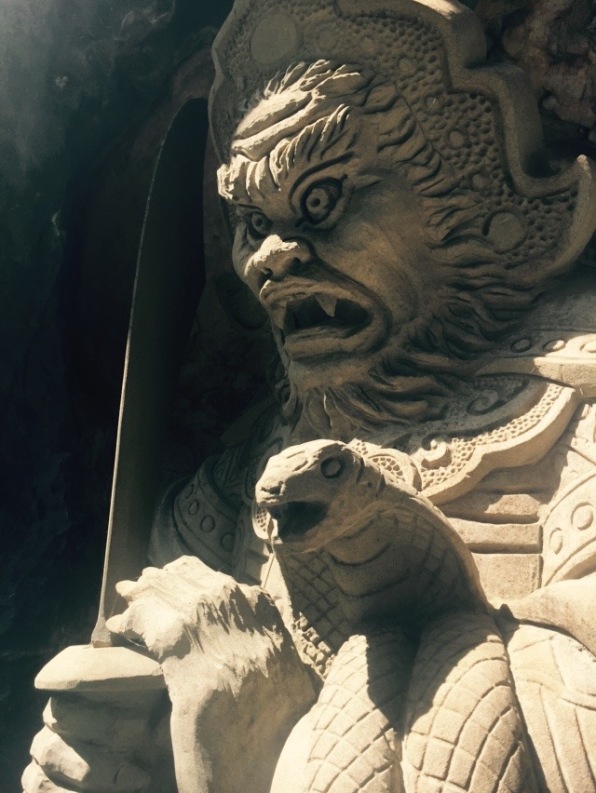
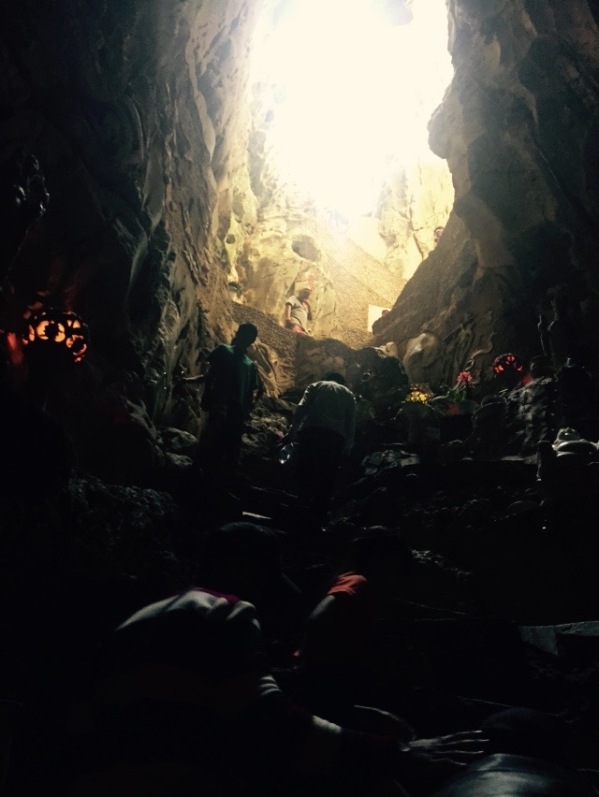
After out visit we dropped by the neighbouring Hyatt to “borrow” their private beach, enjoy a great poolside meal and a massage and then run back to Danang along the sand under rosy twilight skies.
Comments : 1 Comment »
Tags: asian cities (other), danang, Vietnam
Categories : Uncategorized
Beach jog
7 02 2017Comments : Leave a Comment »
Tags: asian cities (other), danang, personal, Vietnam
Categories : Uncategorized
Hoi An
7 02 2017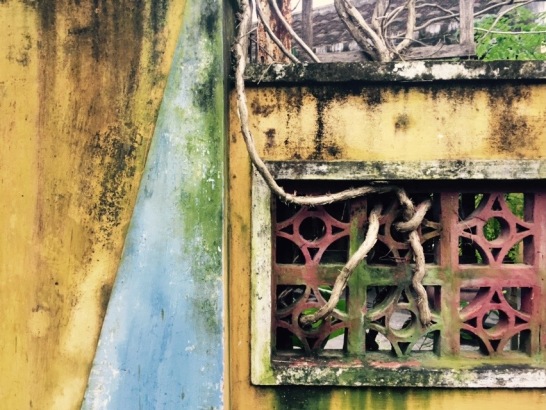

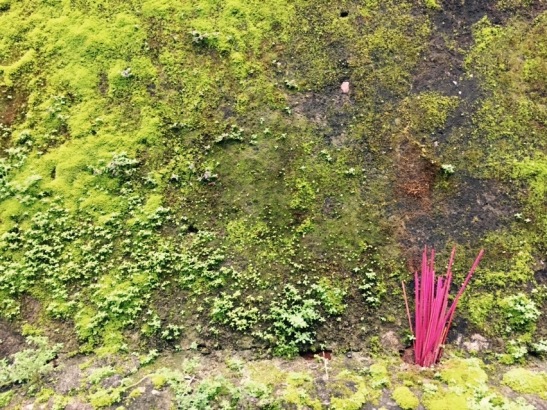
Hoi An, unlike Danang but so close to it, is a hotspot for Western tourists. As soon as you arrive, you notice the increase in white faces on the streets. They are drawn by the lure of an almost-perfectly preserved old town along the river, with tiled shophouses in fading pastel colours. Its is pretty to be sure, although the tourist hordes have swallowed much of the town centre. I preferred to hover around on the edges. We were staying in a beautiful little resort called the Muca hotel, where the restaurant sat on a palm-thatch pontoon in the river, strung with colourful lanterns and the lush gardens bloomed with palm trees and orchids. When it rained – which it did for several days, for hours at a time – we would stay in our room, lounging on a majestically sized bed, reading novels (“Naomi” and “The Sympathiser”) or watching “Spartacus: Blood and Sand” or Chinese singing shows on the iPad.
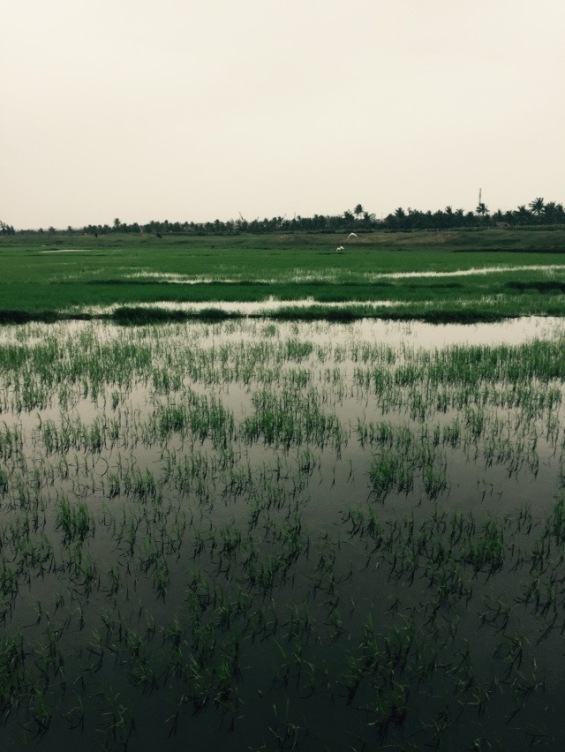
When it was clear we would venture into the old town (I had a suit made) or ride around the rice fields on the hotel’s complimentary bicycles. On these cycle trips we saw water buffaloes in the canals, flocks of starlings and pens of squawking ducks, funerals blaring weird droning horn music and banging gongs and hippies smoking weed furtively in the fields. The peacefulness of the scene, the muted shades of grey and green and the gentle cool drizzle on our arms and faces were one of the highlights of the trip for me.
Comments : 1 Comment »
Tags: asian cities (other), danang, hoi an, muca hotel, personal, Vietnam
Categories : Uncategorized
Hoi An: the white rose
7 02 2017
Comments : Leave a Comment »
Tags: asian cities (other), danang, hoi an, restaurants
Categories : Uncategorized
Hoi An street
7 02 2017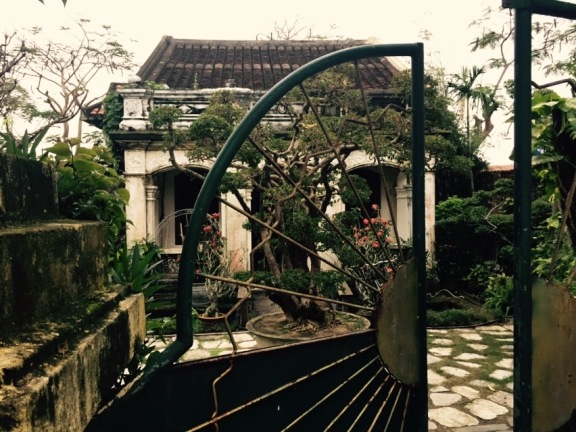
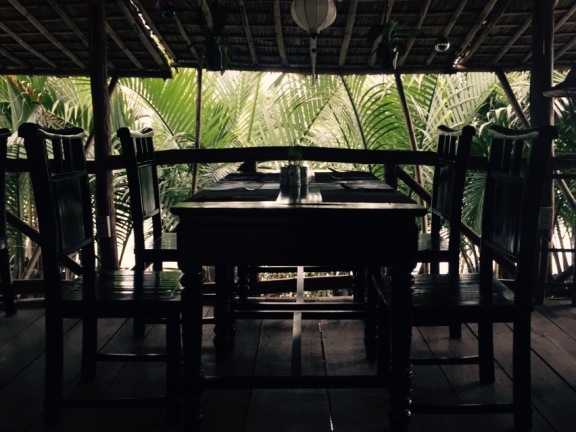
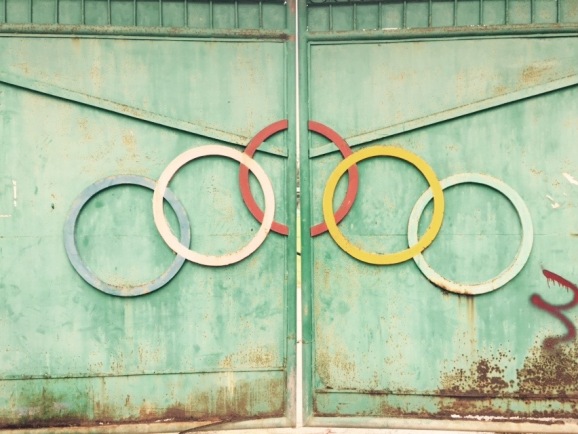
Comments : Leave a Comment »
Tags: architecture, asian cities (other), danang, design, hoi an, Vietnam
Categories : Uncategorized
Indon Art
10 01 2017The new, privately-funded Museum MACAN, or the Museum of Modern and Contemporary Art of Nusantara ( a rather nationalistic Bahasa phrase for the Indonesian archipelago) is set to open this year in Jakarta. Hopefully it will showcase some of this blog’s favourite Indon artists Eko Nugruho:

And Nyoman Masriadi:

Comments : Leave a Comment »
Tags: art, asian cities (other), design, eko nugruho, images, indonesian art, jakarta, nyoman masriadi
Categories : Uncategorized
Tales of the city
28 11 2016Last week the Guardian newspaper launched an interesting experiment – a one week feature on one of the world’s great under-reported cities, Jakarta. The paper ran a series of articles on everything from the Indonesian capital’s breakout hip hop star Rich Chigga to its problems with football hooliganism, notorious traffic, redevelopment plans and the (to me, surprising) fact that the city has actually suffered a net population loss since 1990. Like many third world megacities it is apparently now losing more people than it attracts, a startling reversal of fortunes.
Read all about it here or my own impressions of the “big Durian” here.
Comments : Leave a Comment »
Tags: asian cities (other), indonesia, jakarta
Categories : Uncategorized
Into the wild …
13 11 2016
Borneobear, the gay festival in Kota Kinabalu is back for 2016!
Comments : Leave a Comment »
Tags: asian cities (other), borneobear, gay, malaysia
Categories : Uncategorized
Taichung: the little city that could
21 09 2016
For my birthday, my boyfriend had bought me a “mystery ticket”. We would be going away for the weekend…somewhere, but I didn’t know where. My first suspicions, for some reason, were Malaysia but one evening, tired after work and not thinking clearly, he let slip that it was to be Taiwan. So, Taipei I assumed, and started mentally planning. It was only when we arrived to check in for the flight that the smiling attendant took my passport and asked “So, for Taichung?”
Taichung. What did I know about Taichung? I frantically wracked my brain. Nothing. I drew a big blank.
My boyfriend later told me that when he had mentioned his plan to Taiwanese friends, they had also responded with “Taichung?”
Taiwan’s third biggest city, with a population of about one million, is not really a top tourist draw. It is not the kind of place many international tourists would pick as their top choice, lacking the big city buzz of Taipei or the lush scenery of the countryside. There is no beach. The mountains are about an hour away. Taichung is generally thought of – if people think of it at all – as a nice place to live, a spacious green city with a mild climate. So in other words, an Asian version of Brisbane. Or Adelaide, perhaps.
Once an industrial boomtown, the home of “Made in Taiwan” electronics, Taichung is now adjusting to a post-industrial future, its factories moved offshore. The new Taichung is trying on a fresh identity as a city of leisure and culture, art and cafes. But still, it retains an (endearing?) provincial twinge.
So, with modest expectations we set off for the weekend. Not expecting too much, we found ourselves surprised at almost every step. Taichung was relaxed and provincial – in the best possible way – but also more of a city than I had expected. The cafes were hipper, the sights more interesting, the art better, the architecture more arresting. And yet it still moved at a slower pace – and this was perhaps its greatest asset.
It was a city where friends could gather to barbecue squid and drink beers on the curb every evening outside their shops, and you could cycle through local neighbourhoods, but there was still more than enough to do. There was the cheap denim and thumping pop music of the Fengjia night market with its typically Taiwanese array of snacks: pungent tofu and duck-shaped candy floss, hot-dogs-in-hot-dogs, bubble tea and beef noodles (as well as the local specialty, turkey rice). Neon signs glowed and garish octopuses and pigs were perched on top of restaurants hawking different kinds of meat.
There were quirky shops and restaurants with funny names: Think Think Human Culture, Pretty Wife Eats Cheese, (and for the gay visitor, bars like “My Sister’s Husband” and shopping centre “Taichung Top City.”) There was indeed a thriving cafe culture (with a current fondness for Cuban sandwiches, a surprisingly cosmopolitan touch) and random, big malls spaced widely along long roads. A monorail was under construction, Uber had just arrived. Which is just as well, because Taichung sprawls. There is space, and sky. People are friendly. Families play in parks and people walk their dogs everywhere.
It seemed to have the best of both worlds. I returned to Hong Kong, with its harried impatient rat race and tiny apartments, daydreaming about a return to Taichung.
Comments : Leave a Comment »
Tags: asian cities (other), taichung, taiwan
Categories : Uncategorized
Taichung quirky: Pop culture makes the world go round
21 09 2016

Taichung’s very own Daft Punk impersonator at the stunning new Opera House. Below, a statue of World of Warcraft character Arthus, who at first glance I mistook for a Chinese deity, placed misleadingly outside a Confucian temple. Below, a fan-made Ghibli bus stop near the Feng jia night market.


Comments : Leave a Comment »
Tags: asian cities (other), cultural mix n match, funny, strange, taichung, taiwan, weird
Categories : Uncategorized
Taichung: three great buildings
21 09 2016
Given Taichung’s reputation – or rather, its lack of – we were surprised to find some examples of stellar modern architecture in the city. Not that the general standard was particularly high, it has to said. There are plently of nondescript glass boxes and humdrum malls (although the city does do a nice line in ramshackle little alleyways with Japanese-style potplants and faux-art deco apartment complexes.) But in a few of its landmark buildings – several, interestingly, by Japanese architects – the city has outdone itself.



The brand new National Theatre by Toyo Ito is Taichung’s new calling card, a gleaming showpiece project that frankly, wowed me, with its alien cuboid exterior, cavern-like foyers and charming rooftop garden, looking out over the city’s brand new gleaming centre. It has “icon” (or if you are cycnical, costly white elephant) stamped all over it. But I was persuaded. When we went at 10 o’clock at night it was crowded with couples and sightseers and its restaurants and hipster-tastic art book, bicycle and vinyl stores were busy. My boyfriend disliked this populist touch but I was all in favour: whatever pulls in the punters, after all. And the building itself is endlessly fascinating.

Out of the city itself at Sun Moon Lake, the Shueishe Visitor Centre by Norihiko Dan also makes great use of curved concrete, but this time in a more sinuous form, creating a building-as-landscape artificial hillside traversed by canal-like channels, facing out to the lake itself. The building houses a cafe and gift store where we sheltered from the rain. The misty forests and lake view expanses brought out the beauty in the building perfectly, or perhaps even – and what could be a greater compliment – the reverse was true?


Finally, the oldest of these modern landmarks is the chapel at Taichung’s Tunhai University chapel, designed by none other than the noted I.M. Pei.

Comments : Leave a Comment »
Tags: architecture, asian cities (other), design, taichung, taiwan
Categories : Uncategorized
Downtown
21 09 2016
I was quite unprepared for Taichung’s downtown area, a district not like any other I had encountered in a big Asian city before. It was perhaps a little bit like the similarly-declining Japanese resort town of Atami, or the grimy 1930s Chinatown of Manila, or even a little touch of Sao Paulo? Once the beating heart of this proud industrial centre, the old downtown had hollowed out after a series of disastrous fires and a demographic and economic shift towards the newly-developed “centre” around the National Theatre, further to the West. What was left were scarred derelict towers which loomed over still-busy but distinctly downmarket streets. The crowds on the pavement were, I was surprised to find, largely Southeast Asian in parts. Signs were in Thai and Vietnamese and Filipino. Indonesian pop music blared. There were also surprising numbers (for East Asia) of vagrants and obvious drug addicts, hanging around the busy central train station in its nineteenth century gingerbread station. The fact that I took all this in while buzzing on betel nut perhaps gave it even more of an edge.

And yet there were signs of gentrification too – a new Meridien hotel on the way up, and “Eye Icecream”, an amazing, almost Willy Wonka-esque high concept ice-cream store in a refurbished 1927 Japanese colonial optometrist clinic. This now drew a tremendous line of instagram happy-snappers to its Hogwarts-like interior and ridiculous icecream confections.

Here too were “Think Think Culture Space”, an arty and intellectual coffee shop heavy with the smell of weed and sporting leaflets for all manner of interesting local events (“Cycle for a free Tibet” anybody?) and the city’s dingy basement gay bar, named (screamingly) “My Sister’s Husband.”
It was a weird mishmash of characterful decrepitude, outright decay, immigrant energy and the tantalising possibility of a looming full-hipster turn around, a little bit edgy (although I never felt unsafe.)
Comments : Leave a Comment »
Tags: asian cities (other), taichung, taiwan
Categories : Uncategorized
Synapticism
21 09 2016
Synapticism is an interesting urban exploration/haikyo blog I stumbled upon, seemingly based in Taichung. The site has lots of interesting information on the background behind the decay of Taichung’s old downtown area with its dilapidated Qianyue Department store, as well as links to other interesting “urbex” sites in the city like the abandoned Jukuiju mansion and the “shark graveyard” below.


All pics here courtesy of the Synapticism blog.
Comments : Leave a Comment »
Tags: architecture, asian cities (other), strange places, taichung, taiwan
Categories : Uncategorized
Possibility of an island
21 09 2016
Taiwan’s policy of decentralising cultural institutions means that Taichung, only its third largest centre, is home to both the National Theatre and the country’s Museum of Fine Arts. This is an impressive institution set in a verdant garden of modernist sculptures, a fifteen minute stroll South from the centre of town.




The museum was hosting the Taiwan Biennale when we went, which this year responded to the theme “Possiblity of island,” a title borrowed from the French writer Michel Houellebecq. As so often happened in Taichung, we were pleasantly surprised. The exhibitions were of quite a high standard, ranging from a history of Taiwanese photography to the whimsical and dark paintings of Huang Hai-hsin (scroll down), neon art, some Jackson Pollock style abstract expressionism and most startlingly, an exhibition of male nudes by gay artists, each featuring a photo of the artist at work himself in the nude, and a brief blurb in shockingly blunt language about his sexual proclivities. One artist, we learned, liked to finger himself while he masturbated. I was caught quite offguard reading this in the National Fine Arts Museum!
Comments : Leave a Comment »
Tags: art, asian cities (other), gay, images, taichung, taiwan
Categories : Uncategorized
21 09 2016

The ‘Rainbow Village’ is one of Taichung’s few high-profile “sights” and probably the best known example of outsider art in Taiwan. The colourful, naive paintings are the work of one man, now 94, who drew them over the decades on the outer walls of a fairly grim public housing block for former Kuomintang war veterans. Once threatened with demolition, the block (not really a “village”) was saved by a public outcry and has now become an out-and-out tourist scrum, a jarring experience in otherwise-laidback Taichung. When I was there the site was so crowded with holiday makers armed with selfie sticks that I gave up trying to take a “clean shot” and just started taking pictures of the other tourists. “Papa Rainbow” was there too, manning the souvenir stall and looking mighty proud- as he should – of the colourful chaos he has created.



Comments : Leave a Comment »
Tags: art, asian cities (other), outsider art, strange places, taichung, taiwan
Categories : Uncategorized




